Chapter1Lecture#1课程大纲和信号基本概
- 格式:pdf
- 大小:171.51 KB
- 文档页数:11
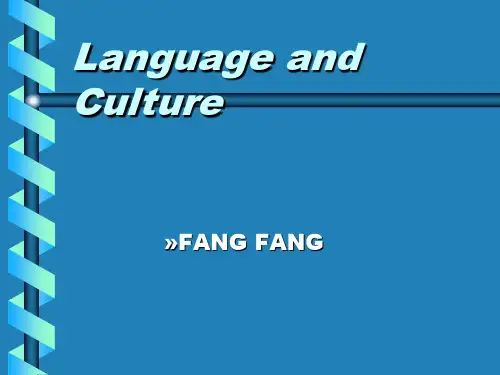
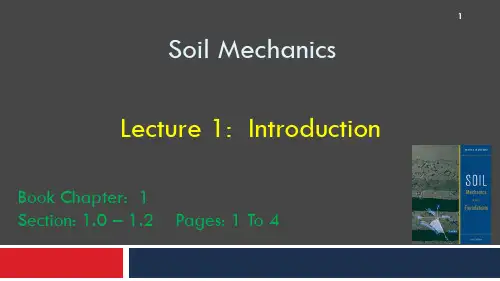
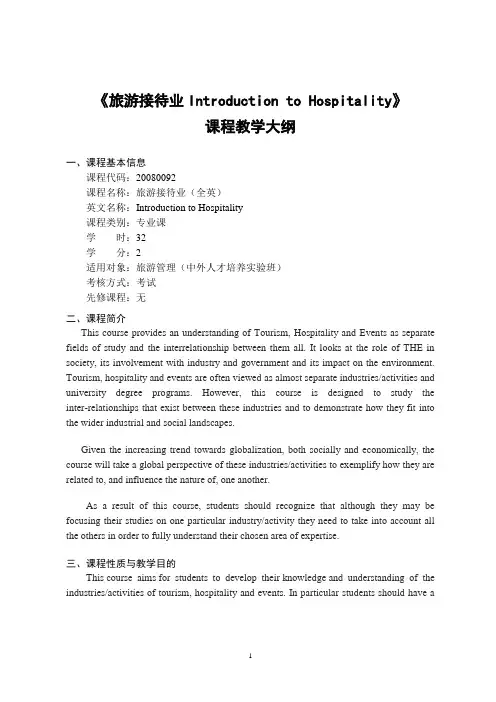
《旅游接待业Introduction to Hospitality》课程教学大纲一、课程基本信息课程代码:20080092课程名称:旅游接待业(全英)英文名称:Introduction to Hospitality课程类别:专业课学时:32学分:2适用对象:旅游管理(中外人才培养实验班)考核方式:考试先修课程:无二、课程简介This course provides an understanding of Tourism, Hospitality and Events as separate fields of study and the interrelationship between them all. It looks at the role of THE in society, its involvement with industry and government and its impact on the environment. Tourism, hospitality and events are often viewed as almost separate industries/activities and university degree programs. However, this course is designed to study the inter-relationships that exist between these industries and to demonstrate how they fit into the wider industrial and social landscapes.Given the increasing trend towards globalization, both socially and economically, the course will take a global perspective of these industries/activities to exemplify how they are related to, and influence the nature of, one another.As a result of this course, students should recognize that although they may be focusing their studies on one particular industry/activity they need to take into account all the others in order to fully understand their chosen area of expertise.三、课程性质与教学目的This course aims for students to develop their knowledge and understanding of the industries/activities of tourism, hospitality and events. In particular students should have aclear understanding of the sectors of these industries/activities and the inter-relationships that exist between them.After successfully completing this course you should be able to:1.clearly define tourism, hospitality and event management;prehend and report on the inter-related nature of tourism, hospitality and events;3.understand and explain the concepts, evolution and impacts of tourism, hospitality andevents globally;4.work with peers to synthesise and communicate information on a particular topic fromthe body of knowledge on tourism, hospitality, and events;5.demonstrate academic literacy and ethical scholarship, and appreciate how this appliesto future studies;pare tourism and hospitality industries in China and globally, especially theroles of different actors and management/government principles in different countrie s.四、教学内容及要求Chapter 1 Introducing Hospitality1.Learning Objectives1.1Discuss the history of hospitality through the ages.1.2Describe the characteristics of the hospitality industry.1.3Explain corporate philosophy and total Quality Management.1.4Discuss the many facets of service and why it has become such an important part ofthe hospitality industry.1.5Suggest ways to improve service.1.6Discuss current trends in the hospitality industry.2.Contents2.1Hospitality through the ages.2.2The interrelated nature of hospitality and tourism.2.3Characteristics of the hospitality industry.2.4Sustainable hospitality.2.5Trends in hospitality and tourism.3.Review and Discussion3.1Compare and contrast the characteristics of the hospitality industry in relation to thetourism industry.3.2Identify the corporate philosophy of the global hospitality industry.3.3Assess the importance of Total Quality Management in the global hotel industry.3.4What is the difference between Total Quality Management and quality control?3.5Describe the history of the global hospitality industry.3.6Apart from sustainability and green travel, discuss two key trends in hospitality andtourism.4.Teaching MethodsLecture, Online resources application.Chapter 2 The Hotel Business1.Learning Objectives1.1Describe hotel ownership and development via hotel franchising and managementcontracts.1.2Explain the diamond rating classification of hotels.1.3Classify hotels by rating system type, location, and price.1.4Discuss the concept and growth of vacation ownership.1.5Discuss sustainable/green lodging.1.6Identify trends influencing the hotel business.2.Contents2.1Hotel development and ownership2.2Classification of hotels and lodging properties2.3International perspectives2.4Sustainable or green lodging2.5Trends in hotel development and management3.Review and Discussion3.1Why do you think an entrepreneur would choose to purchase a hotel instead ofacquiring a franchise?3.2Evaluate the importance of various hotel rating systems.3.3Critically assess the trends that you feel will have the biggest impact on the futureof the global hospitality industry.4.Teaching MethodsLecture, Online resources application.Chapter 3 Rooms Division1.Learning Objectives1.1Outline the duties and responsibilities of key executives and department heads.1.2Draw an organizational chart of the rooms division of a hotel and identify theexecutive committee members.1.3Describe the main functions of the rooms division departments.1.4Describe property management systems and discuss yield management.1.5Calculate occupancy percentages, average daily rates, and actual percentage ofpotential rooms revenue.1.6Outline the importance of the reservations and guest services functions.1.7List the complexities and challenges of the concierge, housekeeping, andsecurity/loss prevention departments.2.Contents2.1 The functions and departments of a hotel2.2Management structure and roles of departments2.3 Security/loss prevention2.4 Trends in hotel development and management3.Review and Discussion3.1Briefly define the purpose of a hotel. Why is it important to empathize with theculture of guests?3.2List the main responsibilities of the front- office manager.3.3What are the benefits of using a central reservation system?3.4Why is the concierge an essential part of the personality of a hotel?3.5Explain the importance of accident and loss prevention. What security measures aretaken to protect guests and their property?4.Teaching MethodsLecture, Online resources application.Chapter 4 Food and Beverage1.Learning Objectives1.1Describe the duties and responsibilities of a food and beverage director and otherkey department heads.1.2Describe a typical food and beverage director’s day.1.3State the functions and responsibilities of the food and beverage departments.1.4Perform computations using key food and beverage operating ratios.2.Contents2.1 Food and beverage management2.2 Kitchen2.3 Stewarding department2.4 Catering department2.5 Sustainable wine production2.6 Sustainable brewing2.7 Trends in the beverage industry3.Review and Discussion3.1Briefly describe the challenges a food and beverage director faces on a daily basis.3.2List the measures used to determine the food and beverage department’s profit andloss.3.3Explain the problems a hotel faces in making the following departments profitable:restaurants, bars, and room service.3.4Explain the importance of the catering department for a hotel and list theresponsibilities of a catering sales manager (CSM).4.Teaching MethodsLecture, Online resources application.Chapter 5 The Restaurant Business and Management1.Learning Objectives1.1Describe a restaurant’s front of the house.1.2Explain how restaurants forecast their business.1.3Describe restaurant service.1.4Describe front- and back-of-the-house systems.1.5Outline back-of-the-house operations.1.6Summarize restaurant management financials.2.Contents2.1 The restaurant business2.2 Franchises2.3 Sustainable restaurant operations2.4 Back-of-the-house operation2.5 Restaurant management financials2.6 Trends in the restaurant industry3.Review and Discussion3.1Most restaurants forecast a budget on a weekly and monthly basis, one that projectssales and costs for a year in consideration of guest counts and the average guest check.3.2To operate a restaurant, products need to be purchased, received, and properlystored.3.3Food production is determined by the expected business for the next few days. Thekitchen layout is designed according to the sales forecasted.3.4Good service is very important. In addition to taking orders, servers act assalespersons for the restaurant.3.5The front of the house deals with the part of the restaurant having direct contactwith guests, in other words, what the guests see—grounds maintenance, hosts/ hostesses, dining and bar areas, bartenders, bussers, and so on.3.6The back of the house is generally run by the food service/kitchen manager, andrefers to those functional areas and tasks with which guests usually do not come in contact. This includes purchasing, receiving, storing/issuing, food production, stewarding, budgeting, accounting, and control.4.Teaching MethodsLecture, Online resources application.Chapter 6 Tourism and managed services1.Learning Objectives1.1Summarize the historical impact of transportation on tourism.1.2Define tourism and describe the important international tourism organizations.1.3Describe the benefits and prospects of tourism.1.4Describe the economic impact of tourism.1.5Identify the promoters of tourism.1.6Summarize the sociocultural impact of tourism.1.7Describe ecotourism.2.Contents2.1 The historical impact of transportation on tourism2.2 What is tourism in the 21st century?2.3 The economic, social and cultural impact of tourism2.4 Ecotourism2.5 Sustainable tourism2.6Cultural, heritage, nature, and volunteer tourism2.7Trends in tourism and travel3.Review and Discussion3.1Give a broad definition of tourism and explain why people are motivated to travel.3.2explain the objectives of the UNWTO. What are the characteristics of the travel andtourism industry according to the UNWTO and the WTTC?3.3Choose a career in the tourism business and give a brief overview of what yourresponsibilities would be.3.4Discuss the positive and negative impacts that tourism can have on a country inrelation to tourism pollution and ecotourism.4.Teaching MethodsLecture, Online resources application.Chapter 7 Recreation, Attractions, and Clubs1.Learning Objectives1.1Discuss the relationship of recreation and leisure to wellness.1.2Explain the origins and extent of government-sponsored recreation.1.3Distinguish between commercial and noncommercial recreation.1.4Identify different types of major attractions in China and globally.2.Contents2.1 Recreation, leisure and wellness2.2 Government-sponsored recreation3.2Commercial recreation attractions3.3Managing attractions3.4Noncommercial recreation2.6 Trends in recreation and leisure3.Review and Discussion3.1Define recreation and its importance to human wellness. What factors affect anindividual’s decision to participate in recreational activities?3.2Describe three recreation activities that are sponsored by the Chinesegovernment and identify the superiority of the socialist system.3.3Briefly describe the difference between commercial and noncommercial recreation.4.Teaching MethodsLecture, Online resources applicationChapter 8 Gaming Entertainment1.Learning Objectives1.1Outline the history of modern casinos.1.2Describe the various components of modern casino hotels.1.3Explain how casinos have been integrated into larger hospitality operations.1.4Understand the basic principles of casino operations.1.5Discuss the different positions within the gaming industry.2.Contents2.1 Historical review of gaming entertainment2.2Case of Macau2.3Working in a casino resort2.4Sustainability in gaming entertainment2.5Trends in the gaming entertainment industry3.Review and Discussion3.1What defines a gaming entertainment business?3.2Explain the attraction of gaming entertainment as a tourist.3.3Why is it necessary for strict regulations to be in force on the casino floor?3.4How are hotel operations in a gaming entertainment business different from hoteloperations in a nongaming environment?4.Teaching MethodsLecture, Online resources applicationChapter 9 Meetings, Conventions and Expositions1.Learning Objectives1.1List the major players in the convention industry.1.2Describe destination management companies.1.3Describe the different aspects of being a meeting planner.1.4Explain the different types of meetings, conventions, and expositions.1.5List the various venues for meetings, conventions, and expositions.2.Contents2.1 Development of the meetings, conventions, and expositions industry2.2 Key players in the industry2.3 Types of meetings, conventions, and expositions2.4 Historical associations2.5 venues for meetings, conventions, and expositions1.6Sustainable meetings, conventions, and expositions2.6 Trends in meetings, conventions, and expositions3.Review and Discussion3.1Which new technologies are being used in meetings and conventions?3.2Why are cruise ships being increasingly used as venues for meetings?3.3Discuss the role and functions of a DMC.3.4Outline the format of a typical convention program.4.Teaching MethodsLecture, Online resources applicationChapter 10 Special Events1.Learning Objectives1.1Define a special event.1.2Describe what event planners do.1.3Classify special events.1.4Outline the skills and abilities required for event management.1.5Identify the main professional organizations and associations involved with thespecial events industry.2.Contents2.1 Classifications of special events2.2What event planners do2.3Required skills and abilities for event management2.4Special event organizations2.5Sustainability in special events2.6 Trends in the special events industry3.Review and Discussion3.1What are the responsibilities of an event planner?3.2What are the challenges for event planners and managers?3.3Describe three of the classifications of special events.3.4Describe what organizers should do for crisis management.4.Teaching MethodsLecture, Online resources applicationChapter 11 Leadership and Management1.Learning Objectives1.1Identify the characteristics and practices of leaders.1.2Define leadership.1.3Identify the characteristics and practices of management.1.4Define management.1.5Differentiate between leadership and management.1.6Discuss ethics in hospitality.2.Contents2.1 Leadership in hospitality management2.2Sustainable leadership2.3 Ethical dilemmas in hospitality2.4 Trends in leadership and management3.Review and Discussion3.1Give examples of the management functions as they apply to the hospitalityindustry.3.2Discuss the changing role of managers.3.3Define leadership and name the essential qualities of a good leader.4.Teaching MethodsLecture, Online resources application六、课程考核(一)考核方式考试(二)成绩构成平时成绩占比:40% 期末考试占比:60%(三)成绩考核标准1. Assessment:Presentation: Content (40%) + Structure (30%) + Oral Presentation (15%) + Aesthetics (15%)Reading Report: Content (40%) +Structure (30%) + Grammar (20%) + Aesthetics (10%)2. Class Attendance3. Finals七、推荐教材和教学参考资源1.Walker, J. R. (2017). Introduction to Hospitality (7th ed.). Prentice Hall.2.Ford, R.C., Sturman, M.C. & Heaton, C.P. (2012). Managing Quality Service inHospitality: How Organizations Achieve Excellence in the Guest Experience. Pages 14-17.3.Weaver, D. & Lawton, L. (2014). Tourism Management, 5th Ed. Pages 50-60.4.Walker, J.R. (2013). Introduction to Hospitality, 6th Ed. Pages 354-356.5.UNWTO. (2019). Tourism Highlights. https:///10.18111/97892844211526.Weaver, D. & Lawton, L. (2014). Tourism Management, 5th Ed. Pages 286-295.7.Ford, R.C., Sturman, M.C. & Heaton, C.P. (2012). Managing Quality Service inHospitality: How Organizations Achieve Excellence in the Guest Experience.lard, N. (2006). Learning from the ‘wow’ factor- how to engage customers throughthe design of effective affective customer experiences. BT Technology, 24(1), 11-16.9.Calahan, M. (2014). What do the words hospitality and customer service mean to you?10.Coussement, M.A., Tanyatanaboon, M., Li, Z., Shportko, A. & Miao, L. (2014). Astrategy of duality: New choreography for the Marriott/Ritz-Carlton dance. Journal of Hospitality & Tourism Cases.。


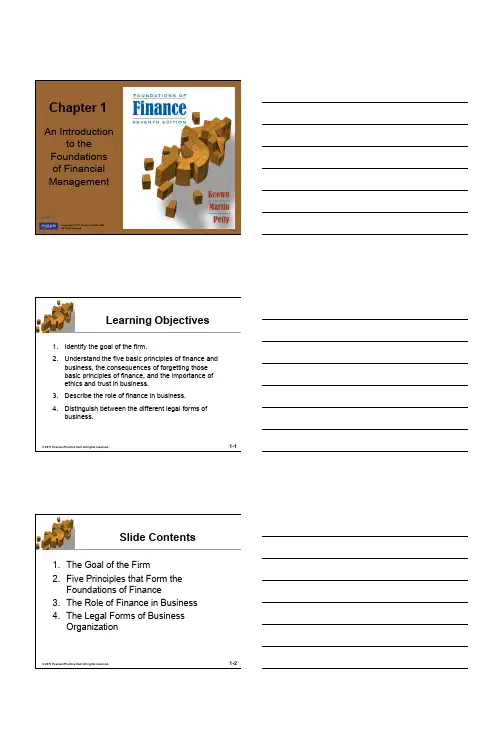
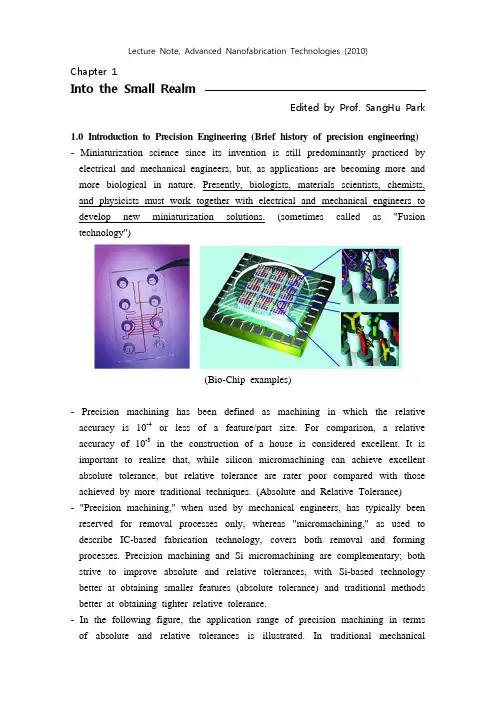
Chapter 1Into the Small RealmEdited by Prof. SangHu Park1.0 Introduction to Precision Engineering (Brief history of precision engineering)- Miniaturization science since its invention is still predominantly practiced by electrical and mechanical engineers, but, as applications are becoming more and more biological in nature. Presently, biologists, materials scientists, chemists, and physicists must work together with electrical and mechanical engineers to develop new miniaturization solutions. (sometimes called as "Fusion technology")(Bio-Chip examples)- Precision machining has been defined as machining in which the relative accuracy is 10-4 or less of a feature/part size. For comparison, a relative accuracy of 10-3 in the construction of a house is considered excellent. It is important to realize that, while silicon micromachining can achieve excellent absolute tolerance, but relative tolerance are rater poor compared with those achieved by more traditional techniques. (Absolute and Relative Tolerance)- "Precision machining," when used by mechanical engineers, has typically been reserved for removal processes only, whereas "micromachining," as used to describe IC-based fabrication technology, covers both removal and forming processes. Precision machining and Si micromachining are complementary; both strive to improve absolute and relative tolerances, with Si-based technology better at obtaining smaller features (absolute tolerance) and traditional methods better at obtaining tighter relative tolerance.- In the following figure, the application range of precision machining in terms of absolute and relative tolerances is illustrated. In traditional mechanicalprecision machining typically used to machine the biggest objects, however absolute tolerances of the dimensions dealt with in precision engineering are 10 μm or below, that is, with a relative tolerance of 10-4 (10μm/10cm) or below.- In general, to obtain the best possible accuracies with a given technique, materials such as wood or brick cannot be used; form-stable and workable materials such as aluminum, stainless steel, ceramics, or glasses must be employed. In other words, material and machining accuracy are intertwined.Fig. 1 Application field for precision machining in terms of absolute sizes and absolute and relative tolerances. (ref. Fundamentals of Microfabrication, CRC Press)Fig. 2 Progress of accuracy in machining. The development of achievable machining accuracy over the last 70 years in shown in this figure under the generalized classification of normal machining, precision machining, ultraprecision machining. (ref. Fundamentals of Microfabrication, CRC Press)- The birth of mechanical, more precise machining dates back to the invention of the lathe. (the below figure shows an Egyptian low relief about 300 B.C.)(ref. Fundamentals of Microfabrication, CRC Press)- Precision machining with a hand-operated lathe got a boost in the mid-1600s from demands for more precision in building better instruments for time measurement.- In the last 25 years, great progress has been made in building machines that can be operated and controlled automatically. Highly precise instruments suchas servomotors, feedback devices, and computers had been implemented by 1977, and many types of machine tools are now equipped for computer numerical control, commonly called CNC. In flexible manufacturing systems (FMSs), CNC workstations are linked by automatic workpiece transfer and handling.- Chemical and photochemical etching underlies what we know today as micro electromechnical systems (MEMS). About A.D. 1400, armor was etched with acid through a linseed-oil-based maskant, marking the first use of chemical milling in conjunction with some type of a mask. In 1822, Niepce developed the photoprocess and, five years later, Lemaitre performed the subsequent chemical milling of a Niepce photoplate-marking the first deliberate use of photolithograpy in combination with chemical milling. The IC revolution in the 1950s employed these same photolithographic techniques.- The use of x-ray lithography in combination with electroplating and molding (or LIGA), introduced by Ehrfeld in 192, demonstrated to the world that lithography may be merged with more traditional manufacturing processes to make master molds of unprecedented aspect ratios and tolerances so as to replica microstructures in ceramics, plastics, and metals.- Soft lithography, including the use of pattern transfer of self-assembed monolayers (SAMs) by elastomeric stamping, was introduced by Whitesides in 1997. This technique forms a bridge between top-down and bottom-up machining; a master mold is made based on "traditional" lithography, and the stamp generated from tis master can be linked with SAMs to print(stamp) substrates with nanosized patterns.- Presently, many promising techniques have been continuously developing for effective fabrication of nano and microscale structures; such as NIL, AFM-lithography, etc.1.1 Size Effect on Weight and Surface Adhesion- When the size of an object decreases, the effect of weight is disregardable, however the effect of adhesion is rapidly increased. (see Fig. 3)- Because an object is divided into small particles, the ratio of volume to surface is dramatically increased.Fig. 3 (left) Scaling of weight and molecular adhesion based on empirical observation and (right) trapped ant inside of a droplet of water due to scaling effect1.2 Scaling Effect1.2.1 Scaling effect on mechanical properties of thin sheet material- By the trend of manufacturing small products, the needs of scaling down of the conventional sheet metal forming process is necessary.- With the ongoing miniaturization in electronics, there is a growing demand for the development of accurate forming processes for very thin sheets (10-40 μm). - Milli-components are classified as a component group for which the size is between macro- and micro-scales: i.e., less than about 10 mm and larger than 10 μm.Fig. 4 Portable electronics; many mill-, micro-scale components are inside of them- However, it is very difficult to describe material properties and characteristics of very small workpiece used in milli-forming.- Previous research reports show that the flow stress decreases with increasing miniaturization. (ref. Engel, U.; Geiger, M.; Eckstein, R.: Proc. Of the 7th Internat. Conf. on Sheet Metal-SheMet ’'99, Univ. Erlangen-Nürnberg, Erlangen, Sep. 27-28, 1999, 529-536)- Also, The ratio of grain size to sheet thickness is a great role to determine material properties. (Kals, R. T. A.; Fundermentals on the Miniaturization of Sheet metal working Processes Bamberg,: Meisenbach, 1999)- Let's think how to design the hardware equipment for the micro and milli-tensile test. The main goal of this study is to find out important parameters to perform mini-tensile test successful. (In detail, to know the reason why the insert set should be used in milli-tensile test.)Fig. 5 A schematic diagram of the inserting set- In the preliminary experiment, with conventional clamp set, it is difficult to get uniform deformation (see Fig. 6). These unexpected wrinkling and failure are caused by big eccentricity.Fig. 6 Wrinkling and failure at conventional tension test of thin sheet(thickness 0.1 mm)- Therefore, an insert set was developed to minimize the eccentricity to the tensile direction.- The material (steel, 18Cr9Ni) investigated with the ranging from 0.025 mm to0.2 mm. By recrystallization the grain size was changed from 10 to 50 μm(2.5h, 650℃). As shown in Fig. 7 and Fig 8, the decrease of the thicknessleads to a decrease of elongation, yield stress and tensile strength.Fig. 7 Elongation by the variation of sheet thicknessFig. 8 Behavior of tensile strength and yield stress by sheet thickness- In summary, it is found out that the most important parameter for the test equipment in micro-tensile test is not a scale down of machine size but minimizing the eccentricity in the tensile test.- Therefore, the insert set was manufactured for making the specimen straight to the tensile direction. In addition, tensile test with accurate measuring equipment is necessary, for example, an optical measurement system or laser extensometer to find out the strain localization of the tensile specimen simultaneously.Mechanical properties dependency on grain size- As the sheet thickness decreases to the same order of magnitude as the grain size, the mechanical properties of the individual grains will dominate the properties of the sheet.- Another effect of the reduction of sheet thickness is the influence of free surface, which was pointed out by Kals et al. (R. Kals, et al., Proceedings of the fourth international conference on sheet metal, vol. II, pp. 65-75, 1996)- In the presence of a free surface, a grain is less constrained and able to deform at a substantially lower apparent flow stress than in the bulk. With a reduction of the absolute sheet thickness, the surface zone becomes relatively more important, leading to a stronger decrease in process forces than may be expected on grounds of geometric similarity.Fig. 9 Variation of tensile stress across a plane of polycrystalline metal specimen subjected to tension. Note that the strength exhibited by each grain depends on its orientation.- However, Kals et al. also showed that the free surface effect is not observed if the grain size is increased to 110 μm. In this case, the process forces were found to increase with decreasing sheet thickness.- To clarify this observation, L.V. Raulea et al. (J. Materials Processing Technology, vol. 115, pp. 44-48, 2001) studied the occurrence of these size effects in two ways: firstly, the effect of a thickness reduction at a constantgrain size is studied in uniaxial extension; secondly, the effect of grain size variation at a constant specimen thickness is studied in three-point bending.- Uniaxial tensile test (material; Aluminum 99.5% 1/2H): the effect of varying thickness at constant grain size (0.016 mm2), shows that it is clear that both the yield and tensile strength decrease with decreasing sheet thickness. (see Fig. 10)Fig. 10 Variation of tensile and yield strength with sheet thickness(constant grain size 0.016 mm2)- Bending experiments: the effect of grain size at constant thickness (1 mm); The results of bending experiments on specimens of 1 mm thickness with various grain size are shown in Fig. 11. In the case of multiple grains over the thickness, the yield strength is observed to increase with decreasing grain size. This effect of grain size is well known and usually referred to as grain-size strengthening or the Hall-Petch effect.Fig. 11 Variation of maximum load and force at yield point for bendingexperiments (constant specimen thickness of 1 mm)- The right side of Fig. 11 is full agreement with the results of Kals; in case of the size of a grain is larger than the sheet thickness (the same condition of single grain over thickness), yield stress and tensile stress are increased proportionally with an increase of the grain size.- If the grain size becomes lager than the specimen thickness, the yield strength tends to increase with grain size due to only a few grains are loaded; moreover, the behavior of each grain differs strongly due to variation in orientation.1.2.2 Scaling effect on microscale friction- An important issue in microtribological studies is the factors affecting friction behavior. Friction and wear are significantly affected by surface films. For example, in the case of silicon, it is known that a few monolayers (1.5~2 nm) of native oxide is formed on even freshly cleaved silicon which gradually grows to a thickness of about 4 nm. The layer of native oxide alters the true friction behavior of silicon at low loads.- Several studies have reported that the coefficient of friction on a macroscale is higher than that on a microscale. The difference may arise from the difference in the normal forces (contact stress) and contact sizes used in the macro and micro measurements. (ref. B. Bhushan, Handbook of Micro/nanotribology, CRC Press, Boca Raton, FL, 1995., B. Bhushan, J.N. Israelachvili and U. Landman, Narure, vol. 374,pp. 607, 1995)- For measurement of friction force and coefficient, FFM (friction force microscope) is used.- Microscale friction data are compared with macroscale friction data shown in the below table.- Macroscale values are higher than those of microscale values at lower contact stresses. When measured for the small apparent area of contact and very low loads used in the microscale measurement, the indentation hardness and modulus of elasticity are higher than that at macroscale. This reduces the degree of wear in microscale measurements. In addition, a small apparent area of contact reduces the number of trapped particles at the interface (between a measuring tip and the surface of a specimen), and thus minimizes the ploughing contribution to the friction force. (see Fig. 12)Fig. 12 Friction force as a function of normal force for virgin Si(111), SiO2 coating and polished natural diamond. Measurements were made on a fresh 1×1 μm scan areas using a diamond tip with a maximum force to 1300 nN. (ref. B. Bhushan et al., Thin Solid Films, vol. 278, pp.49-56, 1996)1.2.3 Scaling effect on microscale liquid flow in microtubes- Miniaturization has recently become the key word in many advanced technologies and the miniaturized systems are being progressively applied in a number of commercial sectors. As those areas continue to grow, it becomes increasingly important to understand the influence of various micro effects,such as entrance effect, wall rough, nanobubles on the wall surface, etc., on the flow characteristics in micro-channels.- Gao et al. investigated experimentally the heat transfer and flow characteristics of dematerialized water flowing through micro-channels with Dh = 0.1~1 mm. The friction factor was in good agreement with conventional theoretical results for channels but the experimental data of Nusselt number are much lower than the conventional theoretical results for small values of Dh. (ref. Gao P, et al., Twelfth international heat transfer conf., pp. 183-188, 2002)- Z. Liu, et al. have conducted an experimental study using IR camera to measure temperature rise resulted from the microscale effects in microtubes, and also the corresponding presusre drop and flux are measured. (ref. Heat Mass Transfer, vol. 45, pp. 297-304, 2009)Fig. 13 Schematic of the experimental test loop- Fig. 14 shows the parts of photos of microtubes with inner diameters of 19.6 and 44.2 μm taken by the IR camera. As shown, the wall temperature gradually increase along axial direction of microtube due to deioned water in microtube heated by the various heat.Fig. 14 Surface temperature distribution photos at the extremity of microtube with inner diameter of 19.6(left-side) and 44.2(right-side) μm at different Reynolds numbers.- As a rule, the flow velocity in microtube is considerable high at lower Re due to small hydraulic diameter (for example, the flow velocity can reach 25.6 m/s for microtube with inner diameter of 19.6 μm when Re is equal to 500), moreover, the distance from the center of the flow to the wall is very small and it is equal to the radius of microtube. Therefore, there is a very high velocity gradient at radial direction of microtube, which leads to an apparent temperature rise due to the effect of the viscous dissipation, as indicated in Fig. 14.- The velocity gradient is different along the radial direction, and the maximal is at the microtube wall and consequent the temperature rise resulted from the viscous dissipation is the highest at microtube wall. However, physical properties of the working fluid contacted with the wall influence the flow characteristic and they are in dependence on the temperature, therefore, the viscous dissipation has a strongly influence on the flow in the case of microflow.。
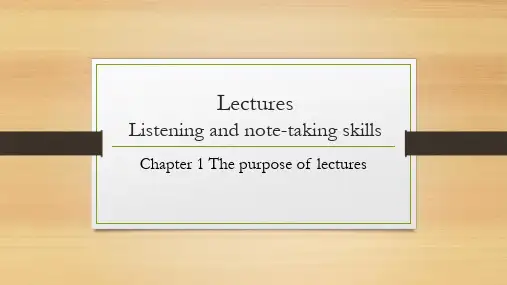
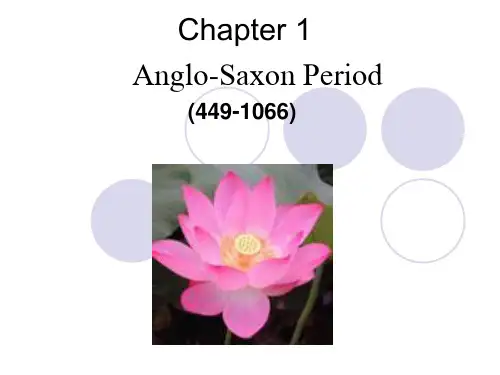
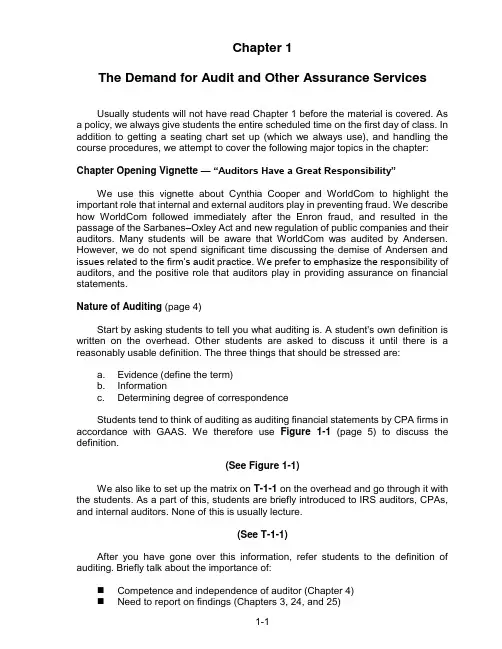
Chapter 1The Demand for Audit and Other Assurance ServicesUsually students will not have read Chapter 1 before the material is covered. As a policy, we always give students the entire scheduled time on the first day of class. In addition to getting a seating chart set up (which we always use), and handling the course procedures, we attempt to cover the following major topics in the chapter:Chapter Opening Vignette —“Auditors Have a Great Responsibility”We use this vignette about Cynthia Cooper and WorldCom to highlight the important role that internal and external auditors play in preventing fraud. We describe how WorldCom followed immediately after the Enron fraud, and resulted in the passage of the Sarbanes–Oxley Act and new regulation of public companies and their auditors. Many students will be aware that WorldCom was audited by Andersen. However, we do not spend significant time discussing the demise of Andersen and issues related to the firm’s audit practice. We prefer to emphasize the respo nsibility of auditors, and the positive role that auditors play in providing assurance on financial statements.Nature of Auditing (page 4)Start by asking students to tell you what auditing is. A student's own definition is written on the overhead. Other students are asked to discuss it until there is a reasonably usable definition. The three things that should be stressed are:a. Evidence (define the term)b. Informationc. Determining degree of correspondenceStudents tend to think of auditing as auditing financial statements by CPA firms in accordance with GAAS. We therefore use Figure 1-1(page 5) to discuss the definition.(See Figure 1-1)We also like to set up the matrix on T-1-1 on the overhead and go through it with the students. As a part of this, students are briefly introduced to IRS auditors, CPAs, and internal auditors. None of this is usually lecture.(See T-1-1)After you have gone over this information, refer students to the definition of auditing. Briefly talk about the importance of:⏹Competence and independence of auditor (Chapter 4)⏹Need to report on findings (Chapters 3, 24, and 25)Distinction Between Auditing and Accounting (page 6)We spend little time on the distinction between accounting and auditing, but it is at least desirable to point out the differences and relationship between the two. Then ask why auditors need to have knowledge of accounting to be effective auditors. See Review Question 1-7.Economic Demand for Auditing (page 6)We like to spend a few minutes discussing the economic role of auditors in society in Chapter 1. Refer back to this material again in Chapter 5 (legal liability) and Chapter 9 (materiality and risk).First, go over the three elements of interest, with emphasis on information risk. Use T-1-2 to summarize the material in the text. It is useful to discuss the effect on earnings of reducing an organization’s interest rate by 1 or 2%. Problem 1-17 is useful for demonstrating the level of assurance associated with audits and reviews, and the effect of these services on information risk and borrowing costs.(See T-1-2)Assurance Services (page 8)We start by asking students to describe assurance services. The term will be unfamiliar to most students, but some may recognize the concept. We use Figure 1-3 (page 13) as a framework for discussing the following services:⏹Assurance services⏹Attestation services⏹Audits of historical financial statements⏹Attestation on internal control over financial reporting⏹Management consulting and other nonassurance services(See Figure 1-3)We then cover Problem 1-16 in class to help students distinguish assurance, attestation, and audit services. Internet Problem 1-1 can be used to discuss reporting on internal control and other Sarbanes–Oxley reporting requirements.Ask students to suggest other types of information on which users may desire assurance and the most likely provider of the assurance. Transparency 1-3 (T-1-3) can be used to list their responses. To start the discussion, we often name one or two types of assurance that aren’t provided by CPAs, such as gas pump inspections and Arbitron radio ratings. Ask students to suggest reasons why the demand for assurance is increasing. Table 1-2 (page 12) is helpful for identifying other types of assurance services that may be provided by CPAs.(See T-1-3)(See Table 1-2)Problem 1-18 can be covered in class to give students a perspective on the similarity between assurance services offered by CPAs, and the role played by organizations such as Consumers Union. Table 1-1 (page 11) can be used to more fully describe the nature of WebTrust and SysTrust services.(See Table 1-1)Types of Audits and Auditors (page 13, page 15)Most students at our universities know little of the types of auditors and the nature of CPA firms. In a brief lecture, we tell the students:⏹The nature of financial, operational, and compliance audits⏹The primary differences between independent CPAs, government auditors,internal revenue agents, and internal auditorsT-1-1 or Table 1-3 (page 14) can be used as part of this discussion. Problem 1-20 is a good one to use in class as part of a discussion about careers in accounting. Problem 1-21 can also be used to help distinguish the types of audits, and the auditor most likely to perform the audit.(See T-1-1)(See Table 1-3)Certified Public Accountant (page 17)We talk briefly about why some people want to be a CPA. We also tell them briefly about the exam requirements and the change to a computerized exam. We then hand out two things:1. A one-page handout showing the requirements for taking the CPA exam inour state, and the name and telephone number of the person to call at theState Board of Accountancy if anyone has eligibility questions.2. A one-page handout from Gleim showing the requirements for sitting for theexam in each state and the name and address of the State Board ofAccountancy for all states. We also note that the CPA Examination websitecontains links to each State Board of Accountancy where students canobtain additional information about the CPA licensing rules in each state.We encourage the students to visit the CPA Examination website () to learn more about the exam and obtain the CPA Candidate Bulletin. We find students appreciate this information and it saves us a lot of time in the office telling them the same thing individually. We also encourage students to visit the student section of the AICPA website ().CHAPTER 1CROSS-REFERENCE OF LEARNING OBJECTIVES AND PROBLEM MATERIAL1-4INFORMATION BEING AUDITED, TYPE OF AUDITOR, CRITERIA, AND NATUREOF EVIDENCEECONOMIC DEMANDFOR AUDITINGINFORMATION RISKCAUSES●Remoteness ofInformation●Biases and Motives ofProvider●Voluminous Data●Complex ExchangeTransactions WAYS TO REDUCE●User VerifiesInformation●User SharesInformation Riskwith Management ●Information isAuditedINFORMATION AND SOURCE OF ASSURANCE。
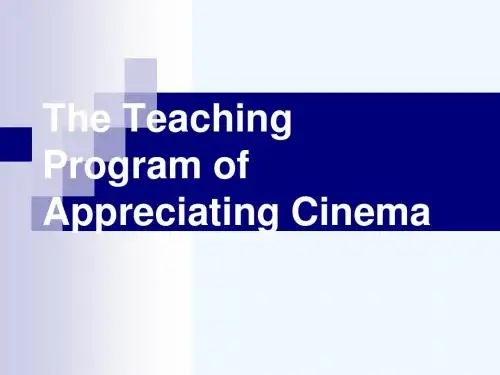
CHIN 5012Lecture 1: Main issues of translation studiesIntro1.1 The concept of translationIDEA: Discuss the literal meaning of “translation” and the Chinese “翻译”. Ask students to think of English words that contain the prefix trans- and the element –lat- (think of words like relation, collation, correlation) What implications do they have for the act of translation? Are there any critical differences between English and Chinese implied by these terms?翻 = turn upside down or inside out, turn over, reverse; change, turn [花样翻新]译 = translate, interpret, decodeACTIVITY: Present the students with 10 sentences that use the word “translation”. Ask them to identify the specific meaning(s) that the term possesses.The term “translation” has several different meanings, depending on the context in which it is used. It can refer to a general field of study (a subject field), a product, and the actual process of translating.The theorist Roman Jakobson has described three basic categories of translation: intralingual translation or “rewording”; interlingual translation, which refers to translation between different languages; and intersemiotic translation. Intersemiotic translation involves the translation of linguistic signs into some form of non-linguistic sign system.[Provide some examples of these different scenarios]ACTIVITY: Present students with a series of scenarios. Ask them to categorize them in terms of Jakobson’s 3 categories. Also get them to create some scenarios of their own. Discuss these as a class.1.2 What is translation studies?Although people have been engaged in the act of translation for centuries, there has been little systematic reflection on the act and what it means. In the West, formal study of the act of translation dates back to the second half of the twentieth century. In 1972, the American scholar James Holmes gave a paper in 1972 which tried to define the discipline of translation studies as being concerned with “the complex of problems clustered around the phenomenon of translati ng and translations”.[How can I suggest the excitement of translation studies?]The emergence of translation studies after the 1980s can be seen in terms of two main features. The first of these is the proliferation of courses dealing with translator training and translation studies. (It is important to remember that translation is no longer merely a linguistic endeavour; in addition to language proficiency, a translator needs to have some awareness of issues in translation studies).ACTIVITY: Look at some descriptions of translation courses offered at various institutions. Perhaps a selection of these could be distributed to students who could discuss them in groups and offer comments on course contents, structure etc.There are also courses available that focus on literary translation. Of course, the task of translating literary texts overlaps in many respects, but it also faces problems not central to general translation. For example style in literature is very important; sometimes, it is more impor tant that the “message” of the text. In addition, literature makes a wider use of the resources of language than general texts.The rise of translation studies can also be gauged through the growing number of books, journals and conferences devoted to translation studies.Magazines: Babel, Meta, TargetI suggest that you familiarize yourself with these publications and try and takea look at them when you have time.[IDEA: Bring a selection of these into the classroom for students.]1.3 A brief history of the disciplinePeople engaged in translation in the West have made statements on the act from time to time. Such figures include Cicero, Horace (both first century BCE) and St Jerome (fourth century CE). In the West, the translation of the Bible has been a focus for the discussion of translation in its practical and theoretical aspects. We will return to the issue of Bible translation when we discuss the ideas of Eugene Nida later in the semester. As you can imagine, the translation of the Bible would attract serious attention from many people. (ASK students about the languages of the Bible; show them my Bendigo translation from the 1800s).[IDEA: Contrast this situation with statements of translation made by the Chinese. Refer to Eva Hung’s book. Perhaps a parallel can be drawn with Xuanzang and his translation of Buddhist scriptures. ]Before the middle of the 20th century, translation was generally encountered as an important element in language learning. Even today, translation exercises seem to play some part in foreign-language textbooks. Instruction focussed on the learning of vocabulary and on grammatical rules; translation was then used as a way of practising and demonstrating mastery of such material. In recent times, foreign-language instruction has emphasizedcommunication in practical situations rather than “abstract” grammatical knowledge. For this reason, when students are asked to translate material these days, they tend to adopt a very literal approach.[IDEA: Provide the students with a page of Chinese sentences culled from various older textbooks. Ask students to comment on the appropriateness of the language and the usefulness of the material.]Since translation was viewed largely as a means for acquiring a foreign language, it was not accorded much importance. The marginality of translation continues down to the present-day. Even at this university, where MA courses in translation and interpreting are offered for Japanese and Chinese, published translation work done by lecturers is not given the same importance as other forms of academic writing, even though the translation of a book may require a great deal of research.In the 1960s, translation began to be taught using a workshop format, especially literary translation. This is perhaps because literary translation is considered, by some at least, to be a form of creative writing. (ASK students about the creativity required to translate.) In such workshops participants could all translate the same text and discuss different solutions to various problems. Although there is nothing very rigorous about this approach, it does allow for an exchange of ideas about significant translation issues.Contrastive analysis was another development in translation studies that contributed to the rise of the discipline. As the name implies, contrastive analysis deals with source texts and their translations. The purpose of such analyses is to see how the translation modifies the source text in order to produce an acceptable rendition. Such comparison can also shed light on fundamental differences in vocabulary and grammar between different languages. Because of its linguistic origins, contrastive analysis can be very dry; it can also become heavily reliant on statistics, a factor that also repels many people with a genuine interest in translation.It is in the 1960s, under the influence of linguistics, that translation studies attempts to present itself as a science. Eugene Nida called his 1964 book Towards a Science of Translating. Although this led to greater precision and method in the discussion of translation issues, translation studies has always managed to remain more than a science: it is too complex and intricate to be schematized in a perfectly satisfying way.1.4 The Holmes/Toury mapHolmes paper was a founding statement for translation studies. He outlined the major features or areas of study that go to make up “translation studies”. The two main branches of translation studies are the “pure” and the “applied”.The first branch, “p ure”here refers to research. In pure translation studies, research is divided into descriptive and theoretical. Descriptive translation studies are divided into 3 types:Product-oriented DTS. This involves the description or analysis of a single ST-TT pair or of several TTs of the same ST. Such studies could be built up into a larger body of translation analysis that examines a specific period, language or translation type.Function-oriented DTS. This treats translation from a sociocultural perspective and investigates issues connected with the type of texts translated and their influence on society.Process-oriented DTS. This is concerned with the psychology of translation: what goes on in a translator’s mind.Such descriptive activities may lead to insights that can be presented in a more systematic fashion. By describing a particular translation phenomenon, it is possible that enough information and insight will be gathered in order to allow a general principle to be established. The theoretical models made bytheory can be further discussed in terms of general theories and partial theories. Can they be applied to the practice of translation as a whole, or do they refer only to a specific aspect of the process?The second branch refers to “applied” areas. The t hree main areas of applied translation studies are:Translator trainingTranslation aidsTranslation criticismTranslation policyNeedless to say, this map is in essence artificial, but it provides a clear picture of the field of translation studies. Nor does it take into account interpreting.1.5 Developments since the 1970sinvestigation of translation and gender (Sherry Simon), postcolonial translation theory (Tejaswini Niranjana and Gayatri Spivak), cultural studies and translation studies (Lawrence Venuti)[IDEA: peruse some recent issues of leading journals for article titles and themes that reflect recent developments.]ACTIVITY: Give students a selection of abstracts and ask them to relate these to specific sectors of the Holmes/Toury map.MAJOR ACTIVITY: Conduct a small translation workshop. Ask the students to translate a brief poem or prose passage and get them to share ideas about how to handle challenging aspects of the original.Another possibility is to ask the two compare 2 passages from Lu Xun or Cao Xueqin translated by different translators.ReferencesGeorges MOUNIN: Les problemes theoriques de la traduction. (SS&H - P306 .M66 1963)Eva Hung and Judy Wakabayashi (eds): Asian translation traditions. P306.8.A78 A84 2005 (borrowed)Eva HUNG: Teaching translation and interpreting 4: building bridges, edited by Eva Hung P306.5 .L36 1998。